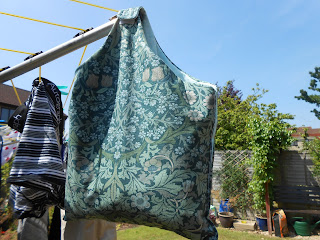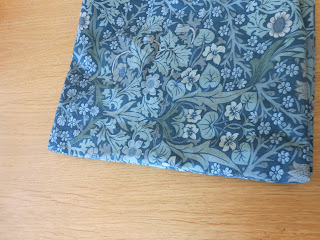First, make sure the outside's facing, sew along the top straight sides.
Then turn it the right way around so the stitching is facing inside.
Cut an appropriate size of Velcro.
Sew the tougher side of Velcro onto the inside of the longer handle piece.
Sew the fluffier Velcro onto the outside of the smaller handle piece.
They should attach like this:
Your final product should look like this:
Well done and thank you for using this guide. I hope you enjoyed the process and that your Peg Bag is being a good item for you.
There are a few things you could change to make the bag unique to your own style.
This is a Peg Bag I made earlier:
When sewing down the sides I sewed with the wrong sides together meaning you can see the stitching.
I also used a different material for the inside. I used a light blue with white a pattern as my outside material is made of very dark colours.
Doesn't it work well? : )
















































